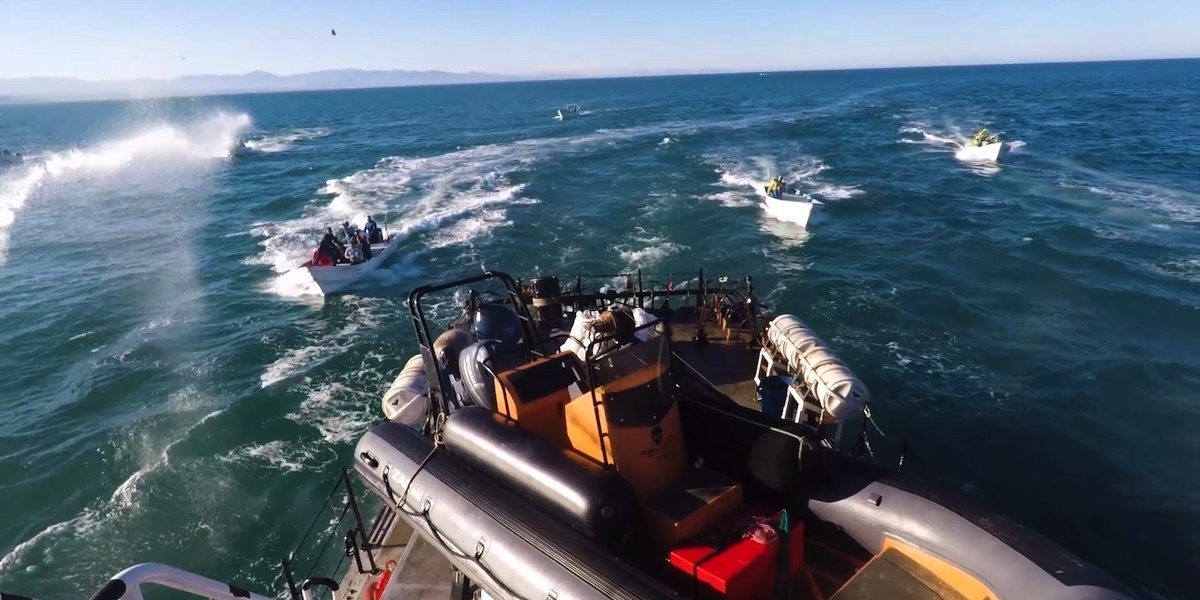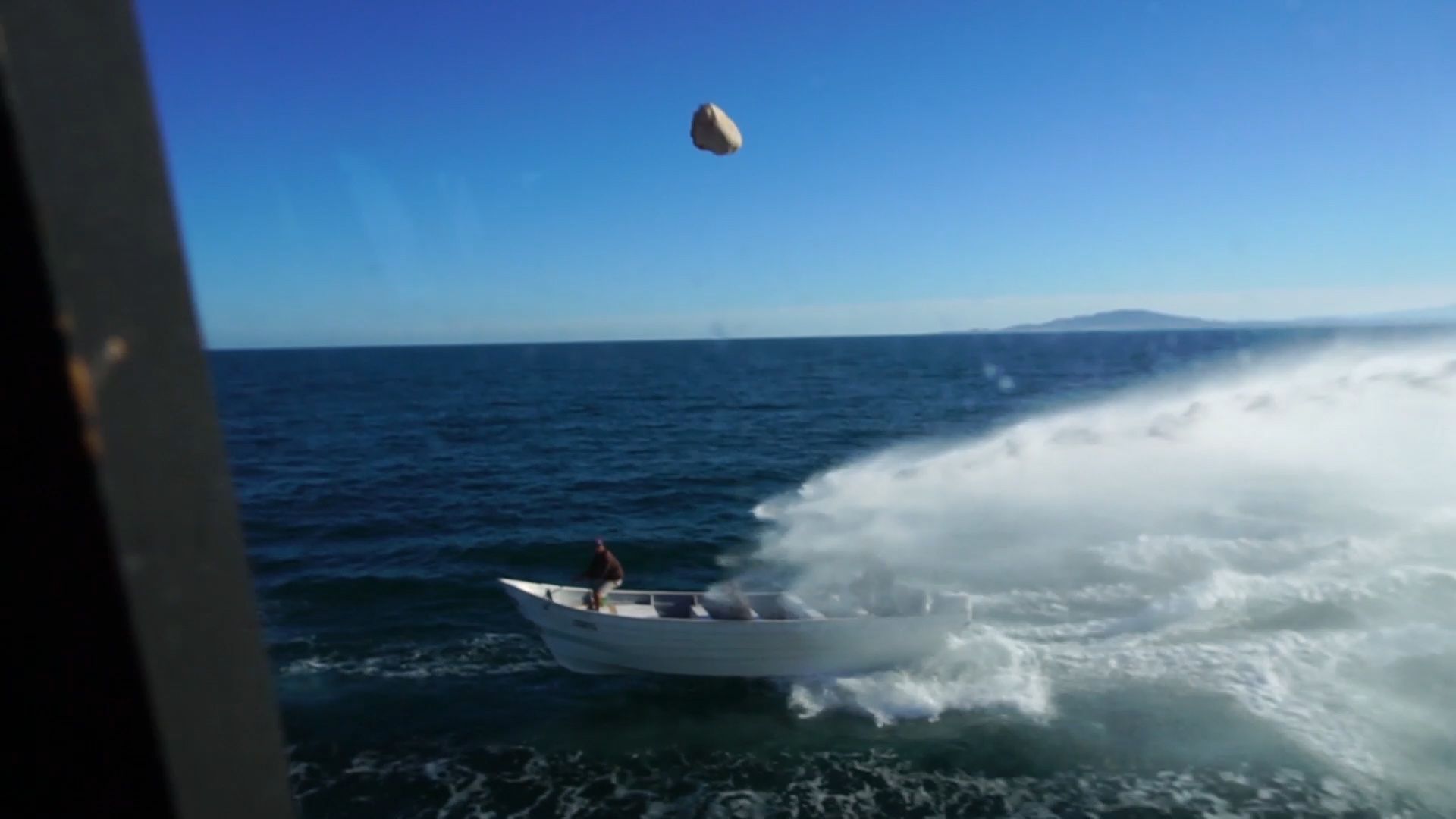
Sea Shepherd Ship Attacked by Rocks, Molotov Cocktails in Vaquita Refuge

The
Sea Shepherd Conservation Society says that its vessel, the M/V Farley Mowat, was ambushed on Jan. 31 by a group of poachers posing as fishermen while the ship was conducting maritime conservation patrols in a vaquita refuge in Mexico’s Gulf of California. It’s the second such attack in less than a month.
The conservation organization says its ship was surrounded by more than 50 assailants on 20 high speed boats, according to a press release shared with EcoWatch.
Sea Shepherd said the side of the Farley Mowat caught fire and its windows shattered because the attackers were hurling molotov cocktails and projectiles such as lead weights and large stones at the vessel.
The group also released dramatic footage of the confrontation:
SEA SHEPHERD SHIP’S WINDOWS SMASHED AND HULL SET ON FIRE BY POACHERS
www.youtube.com
Crew onboard the Farley Mowat used high-pressure fire hoses to defend the vessel while Mexican Navy soldiers and federal police stationed aboard opened fire into the air and sea to deter the attackers. Neither the crew nor the security personnel sustained injuries. No arrests have been made.
The Farley Mowat was
similarly attacked by roughly 35 fishing boats in the waters on Jan. 9.
“These repeated attacks have made Sea Shepherd’s vital conservation efforts within the Vaquita Refuge challenging in recent weeks, casting a doubt on the vaquita’s chances of survival,” the press release states.
Projectiles, including lead weights and large stones, were hurled by poachers.Sea Shepherd
Sea Shepherd conducts maritime patrols in the upper Gulf of California, or Sea of Cortez, to protect the critically endangered vaquita, a porpoise endemic to the waters. Experts say there could be as few as a dozen vaquitas left.
The operations are conducted with the knowledge and cooperation of the Mexican government to help detect illegal fishing activities, the
Associated Press noted.
The conservation group retrieves gillnets from the waters to protect the vaquita. The marine mammal is not directly hunted but they become entangled and drown in the illegal nets set for capturing totoaba, a large and critically endangered fish that’s prized for its swim bladder as a Chinese delicacy.
The latest confrontation happens as the new
Leonardo DiCaprio-produced documentary Sea of Shadows—which features the plight of the vaquita and Sea Shepherd’s work to save it—premiered at the Sundance Film Festival.
“Sea Shepherd is 100 percent committed to continuing retrieval operations of illegal ghost nets and active illegal gillnets to protect the vaquita marina from extinction at the hands of poachers and criminal gangs,” Locky Maclean, Sea Shepherd’s director of ship operations and campaigns, said in the release. “We look forward to working closely with the new government and are grateful in playing a part in the protection and preservation of such a special region of the world, and such an iconic species, the vaquita marina.”
THE VAQUITA ~~ New Doc on Nearly Extinct Vaquita Features Sea Shepherd
Last year, an international vaquita recovery committee rang alarm bells after reporting… https://t.co/rrB8HAByH8— Wildlife Warriors (@GlobalWarriors) May 10, 2018

 233k
233k  41k
41k  Subscribe
Subscribe 
